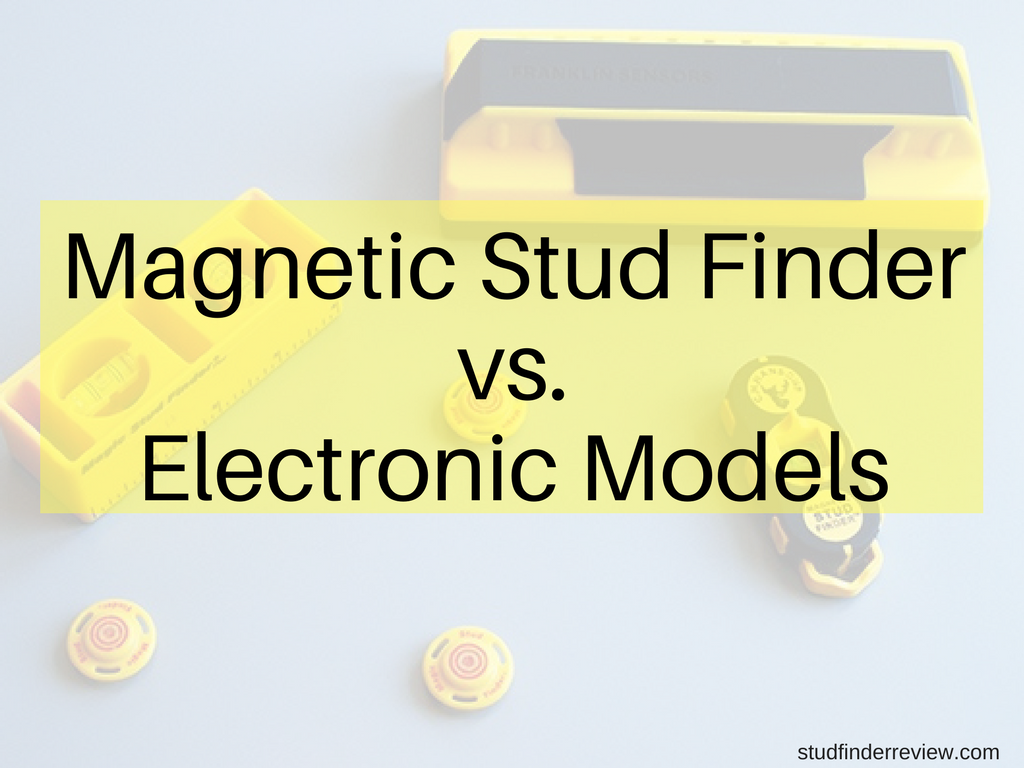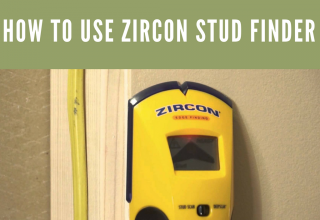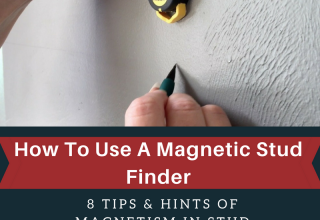 Stud finders add a hands-on tool for construction renovation, repair and decoration as you can peer beneath walls for objects without having to tear up a whole structure. The battle for the possession of the niche plays off a magnetic stud finder vs. electronic models.
Stud finders add a hands-on tool for construction renovation, repair and decoration as you can peer beneath walls for objects without having to tear up a whole structure. The battle for the possession of the niche plays off a magnetic stud finder vs. electronic models.
Magnetic stud detectors integrate a magnet that pivots or dangles on a small area enveloped in plastic or glass. As you scan, the magnet moves to indicate a metallic nail and screw underneath.
Electronic stud finders boast advanced features for sensing density fluctuations beneath the wall. They can detect the center or edge of a stud while advanced models incorporate metal and AC live wiring scan mode to ferret out electrical cables, metallic screws or nail heads.
8 Things To Consider about Magnetic Stud Finder vs. Electronic Versions:
1. How Magnetic Stud Detectors Do the Job
Stationary Magnetic Stud Finders
- Some magnetic stud sensors integrate a small stationary magnet to pinpoint the nails and screws driven into studs while erecting the walling material
- You must move the unit around the wall until sensing the forces of magnetism and go in the course of attraction
Moving Magnetic Sensors
- Moving magnetic stud sensors use a magnet suspended in a compartment and free to run in line with hidden metal
- On walls with superficial fasteners, the magnet moves in the direction of the wall with such speed that it creates a distinct thud sound when it homes onto the wall
- Since it does not depend on the user’s instinct to sense the pull to the metal, you can unravel fasters ensconced in deeply beneath plaster and tile
2. Electronic Stud Finders
Edge-finding stud detectors detect the ends of the stud or other material beneath the walling. It indicates a variation in density, probably the stud’s edge. Move from both sides to pinpoint both edges. After marking the edges, you can home in the center of the stud.
Center stud finders sense the midpoint of a stud with dual sensors that sample separate data of the wall’s dielectric constant. If the two sets of data match, the unit shows the center of the stud.
Instant stud finders embody a recent innovation with multiple detection plates that work motionless to detect a target. They utilize an algorithm to sample the readings feeding into different sensor plates for a faster, more precise indication.
3. Targets Detected by Magnetic & Electronic Stud Finders
Magnetic detectors narrow down regions for nails and screws fixed into studs. Stationary magnetic indicators cannot indicate the presence of fasteners deep or shrouded under thicker walling layers.
Moving magnetic sensors can pinpoint fasteners nestled more deeply beneath plaster and tile. For deep-scanning fasteners, they generate a softer sound due to the snail’s gallop.
Electronic stud finders analyze dielectric constant fluctuations. They also detect metal, joists, live AC voltage and. They discover stud edges or centers and multiple sites of a wall in one fell swoop like the midpoint of a stud, edges of the target, and section without studs.
4. Magnetic Stud Detectors
PROs
- Battery-free stud detectors driven by rare-earth magnets allow you to pin down studs through a subtle, yet indirect method
- Help in narrowing down screws and nails in the wooden studs
- Minimalist and less electromechanical parts make them cheaper while its less prone to downtimes and malfunctioning
- Compact due to lack of motors and mechanical assembly, more comfortable to slip in your pocket, toolbox or pouch, and super-lightweight
- Easy to use without batteries
- Ideal for stud sensing roughly half an inch deep
CONs
- Cumbersome on the walls of houses erected with the modern conventional standards
- Magnetic stud finders project false positives and often require more work to ascertain the stud’s precise location
5. Electronic Stud Finders
PROs
- Inbuilt electrometrical parts utilize sensors to pinpoint the exact location of studs
- Probing walls for dialectic changes or density fluctuations render more accurate readings than magnetic versions with audiovisual cues
- Multi-scanner models examine standard walls, concrete, and cement for metal components like rebar and pipes as well as live AC wires
- Electronic gadgets screen up to 3”thick for a more vivid probe
CONs
- Top-of-the-line and expensive quality
- Battery-reliant and prone to downtimes
- Sophisticated and require mastery
- They don’t always snugly occupy small spaces
- Detect pre-determined targets like edges, center, and regions hosting them with pinpoint precision
6. Electronic Stud Finders Outclass Their Magnetic Counterparts
Electronic sensors probe the depth of a wall for fluctuations in density, detect the edges of studs, project relevant readings on digital displays, and possess extra scanning modes.
Revolutionary products pinpoint multiple studs simultaneously due to their sizable sensors to generate different scanning regions that can work separately. They also pierce the walling veil of metal, joists, pipes, rebar and live electrical wiring.
By making several probes, the device’s sensors recalibrate to help you hone in on the accurate size of the stud by verifying where edges reach.
LED blinks, sound beeps, and bars indicating the scanning mode or low battery allow easy understanding with hands-on data.
7. Features of Top-Quality Magnetic Stud Detectors
- To enlarge the scope of the magnet, Neodymium-equipped magnetic stud finders with the capability to freely move within the case means it’s capable of pinpointing studs through almost all surfaces
- Integrated probing pin helps pinpoint the edges of a stud in the wall and attaching to your wall plate allows hands-free leveling
- Ergonomic structures allow a comfortable grip o scan surfaces
- Notched base with marking space makes it more convenient to highlight points
- No need for audiovisual alerts as magnetism properties indicates the existence of metal studs in that region. The device hits the breaks and halts when it detects a stud.
8. Features of Top-Class Electronic Sensors
- Electronic sensors pack all bells and whistles, including digital displays and app operability, multi-modal settings
- Large sensors have an extended reach to probe more space quickly and identify multiple studs simultaneously
- Center-targeting capability lets you work out the midpoint of the stud via scanning with no manual or guesswork input
- LED lights that illuminate a visual system when you hit the mark render convenience and ergonomic superiority
- Audio or visual clues will fire off if you hone in on the exact location
- Additional scanning modes allow you to screen metal items beneath like pipes, gas ducts, rebar and live electrical wiring
Final Verdict
In the magnetic stud finder vs. electronic model arms race, battery-powered and electromechanical inventions cannot completely knock spots off magnetism. Magnetic stud sensors cost only a small fortune while they will detect studs in lath and plaster.
The pricier electronic multi-scanning units have extra modes, auto-capabilities, and additional illumination to help highlight regions with clockwork accuracy.
Advanced stud detectors can probe a wall or other sturdy surface for metal targets like the pipe, live electrical wiring and rebar. Electronic detectors armed with multiple sensor plates forage the wall in various locations instantly. You can access the center of a stud, edge, width, and absence of studs in a single stroke.

















Leave a Reply